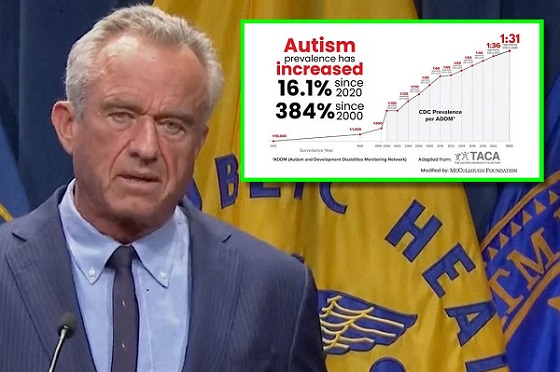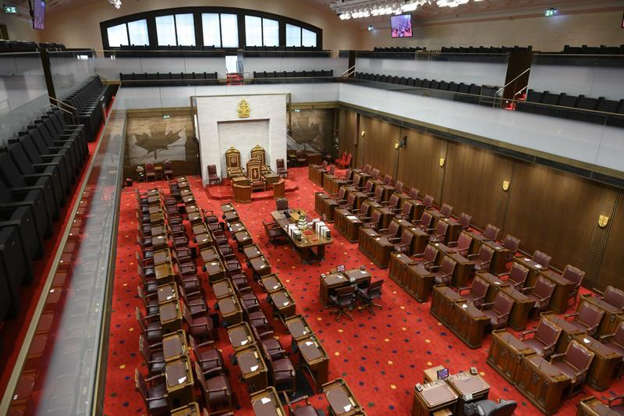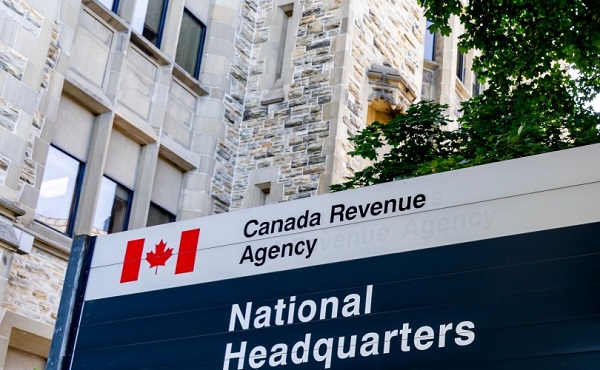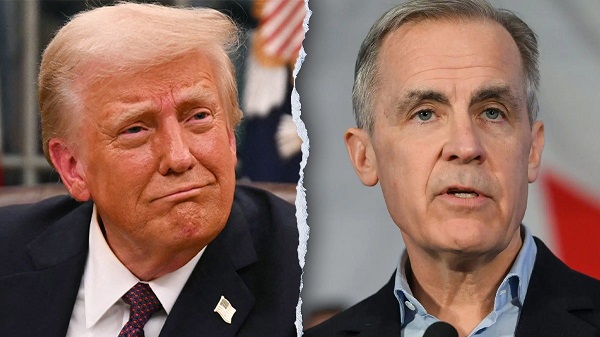illegal immigration
Feds can’t find foreign nationals released into US as terrorism threats heightened

Concertina wire is installed along the banks of the Rio Grande River as part of “Operation Lone Star,” Texas Gov. Greg Abbott’s border security mission.
From The Center Square
By
Nine months after the U.S. Department of Homeland Security Office of Inspector General expressed alarm that under the Biden administration, DHS agencies couldn’t locate where illegal foreign nationals were after they released them into the U.S., ongoing problems persist and terrorism threats are heightened.
Last September, the DHS OIG released a redacted report stating that DHS “does not have assurance that all migrants can be located once they are released into the United States.”
It conducted an audit over a 17-month period when DHS released more than 1.3 million foreign nationals into the U.S. after they illegally entered through the southwest border.
Of the 981,671 Border Patrol records evaluated from March 2021 through August 2022, addresses for more than 177,000 foreign nationals, or nearly 20%, “were either missing, invalid for delivery, or not legitimate residential locations,” it found.
The OIG also found that during this period, Border Patrol agents released 430,000 illegal foreign nationals into the U.S. on their own recognizance with Notice to Appear documents to go before an immigration judge. They released nearly 95,000 with Notice to Report documents to go to an Immigration and Customs Enforcement (ICE) office and more than 318,000 through a new Parole Plus Alternatives to Detention (Parole + ATD) program.
Under the Biden administration, instead of being processed for removal, foreign nationals deemed inadmissible were granted Parole + ATD and released into the U.S. They were also tracked with electronic devices either through wearing ankle bracelets or being given smartphones “intended to ensure compliance with release conditions, court hearings, and final orders of removal,” the report notes.
Prior to releasing them, federal agents are required to vet them to ensure they don’t have a criminal record and aren’t connected to countries of foreign concern or terrorist organizations. Federal agents are also required to obtain an address of where they are going in order to enforce federal immigration law.
The OIG found that DHS agencies had “limited ability” to accurately and effectively track them. Border Patrol “cannot always obtain and does not always record migrant addresses” and ICE “does not always validate migrant addresses prior to their release.”
Border Patrol agents didn’t accurately and effectively capture valid addresses, the report notes, because they were inundated with large influxes of people arriving at the border and because of “limited coordination with ICE and its limited authority to administer compliance with address requirements.” The audit found that “ICE also did not have adequate resources to validate and analyze migrants’ post-release addresses.”
ICE is statutorily required to enforce federal immigration law, specifically detaining and removing inadmissibles. “ICE must be able to locate migrants to enforce immigration laws, including to arrest or remove individuals who are considered potential threats to national security,” the OIG said. “The notable percentage of missing, invalid for delivery, or duplicate addresses on file means DHS may not be able to locate migrants following their release into the United States. As the Department continues to apprehend and release tens of thousands of migrants each month, valid post-release addresses are essential.”
Prior to this audit, the OIG found that DHS processes allowed known or suspected terrorist to illegally enter the U.S. and “potentially threaten national security and public safety.”
The report was released nearly 22 years after the 9/11 terrorist attacks. The terrorist attacks prompted the creation of DHS, consolidating several federal agencies all mandated to protect Americans and prevent another terrorist attack from occurring.
Within the last nine months, the OIG continued to report on DHS failures and authorities nationwide have issued heightened terrorist warnings.
One OIG audit found that U.S. Customs and Border Protection (CBP) and U.S. Citizenship and Immigration Services (USCIS) weren’t effectively screening asylum seekers – meaning they didn’t know who they were releasing into the country.
Another OIG report found that CBP and ICE weren’t detaining and removing inadmissables arriving at a major international airport – with 44% flagged for removal not showing up for their removal flights because federal agents had released them.
Another OIG audit found that DHS, CBP, USCIS and ICE agents didn’t properly vet or resolve derogatory information for tens of thousands of Afghans released into the U.S. After the Biden administration pulled U.S. forces out of Afghanistan in August 2021, 97,000 Afghans were brought to the U.S. Among them, 77,000, or 79%, were granted humanitarian parole into the U.S. allowing them to stay for two years.
The OIG expressed alarm about DHS not having a process “for monitoring parole expiration” after the two-year period ended in August 2023, meaning no plans were in place to remove them.
As numerous officials have warned a terrorist attack on U.S. soil is imminent and members of Congress have demanded answers, an unprecedented estimated 12 million people from over 150 countries have illegally entered the U.S. since the president has been in office.
illegal immigration
Despite court rulings, the Trump Administration shows no interest in helping Abrego Garcia return to the U.S.


 By Greg Collard
By Greg Collard
With research assistance from James Rushmore
Timeline: The Case of Kilmar Armando Abrego Garcia
With President Trump sitting next to him, El Salvador President Nayib Bukele told reporters in the Oval Office on Monday that no, he is not going to release Kilmar Armando Abrego Garcia from his country’s Terrorism Confinement Center (CECOT), despite a Justice Department lawyer admitting in a court filing that Abrego Garcia’s deportation last month was an “administrative error.”
No matter, Bukele said when asked if would return him to the U.S.:
Bukele: Of course I’m not going to do it. The question is preposterous. How can I smuggle a terrorist into the United States. I don’t have the power to return him to the United States.
Reporter: But you could release him inside El Salvador.
Bukele: Yeah, but I’m not releasing, I mean I’m not very fond of releasing terrorists into our country. We just turned the murder capital of the world into the safest country in the Western hemisphere, and you want us to go back into releasing criminals so we can go back to being the murder capital of the world? That’s not going to happen.
Not that there was any doubt what Bukele would say. Attorney General Pam Bondi set the tone early on in the meeting. She explained what the Supreme Court meant last week when it said a lower court ruling “properly requires the government to ‘facilitate’ Abrego Garcia’s release from custody in El Salvador.”
The Supreme Court ruled, president, that if El Salvador wants to return him … we would facilitate it, meaning provide a plane.
It brings to mind President Clinton’s infamous grand jury testimony when he said: “It depends upon what the meaning of the word ‘is’ is.”
Abrego-Garcia left El Salvador and illegally entered the U.S. in 2011. His status as an illegal immigrant changed after he was arrested in 2019 and the Department of Homeland Security accused him of being a member of the MS-13 gang. Abrego Garcia fought the accusation and applied for asylum. Instead, an immigration judge granted him “withholding of removal” status.
A federal judge wrote in an April 6 opinion that in El Salvador “the Barrio 18 gang had been targeting him and threatening him with death because of his family’s pupusa business.”
The Justice Department argues its hands are tied. It doesn’t matter that the U.S. is paying El Salvador $6 million a year to house U.S. deportees at CECOT.
“The United States does not have control over Abrego Garcia. Or the sovereign nation of El Salvador,” says one court filing.
Below is a timeline of the case since Abrego Garcia was arrested last month, leading up to Monday’s Oval Office meeting with Bukele.
March 12-15, 2025
ICE agents stop Abrego Garcia and tell him that he is no longer under “withholding of removal” status. The Trump administration says he is a member of the MS-13 gang, which the president has designated a foreign terrorist organization.
Abrego Garcia, who denies he is part of MS-13, is sent to an ICE detention facility in La Villa, Texas, and from there he is deported to El Salvador on March 15 along with 260 others, primarily Venezuelan nationals. He is being held in CECOT, a prison that has a capacity of 40,000 inmates.
March 24, 2025
Abrego Garcia and his wife, Jennifer Vasquez Sura, file a lawsuit that notes Abrego Garcia has been in the U.S. legally since 2019 under withholding of removal status, and that the designation was never lifted.
They also accuse the government of sending Abrego Garcia to El Salvador despite “knowing that he would be immediately incarcerated and tortured in that country’s most notorious prison; indeed, Defendants have paid the government of El Salvador millions of dollars to do exactly that. Such conduct shocks the conscience and cries out for immediate judicial relief.”
The lawsuit requests the court order the U.S. government to tell the government of El Salvador to release and deliver Abrego Garcia to the U.S. Embassy in San Salvador.
March 31, 2025
The Justice Department acknowledges in a court filing that “although ICE was aware of his protection from removal to El Salvador, Abrego Garcia was removed to El Salvador because of an administrative error.”
Still, the Justice Department argues the motion should be denied because the court “has no power” over El Salvador. Justice Department attorneys argue:
Under their (plaintiffs) logic, this Court may assume jurisdiction to decide whether the order is legal, but if the order were determined legal, then jurisdiction would disappear again.
The government also says there’s no proof that Abrego Garcia will be tortured or killed in CECOT:
Plaintiffs point to little evidence about conditions in CECOT itself (focusing primarily on its capacity for detainees), instead extrapolating from allegations about conditions in different Salvadoran prisons. While there may be allegations of abuses in other Salvadoran prisons—very few in relation to the large number of detainees—there is no clear showing that Abrego Garcia himself is likely to be tortured or killed in CECOT. More fundamentally, this Court should defer to the government’s determination that Abrego Garcia will not likely be tortured or killed in El Salvador.
April 4, 2025
U.S. District Court Judge Paula Xinis orders the Trump Administration to return Abrego Garcia to the U.S. by 11:59 p.m., April 7. She writes:
Plaintiffs are likely to succeed on the merits because Abrego Garcia was removed to El Salvador In violation of the Immigration and Nationality Act…and without any legal process; his continued presence in El Salvador, for obvious reasons, constitutes irreparable harm; the balance of equities and the public interest weigh in favor of returning him to the United States; and issuance of a preliminary injunction without further delay is necessary to restore him to the status quo and to avoid ongoing irreparable harm resulting from Abrego Garcia’s unlawful removal.
April 5, 2025
The Justice Department appeals the order, calling it “indefensible” that “a federal district judge ordered the United States to force El Salvador to send one of its citizens—a member of MS-13, no less—back to the United States by midnight on Monday. If there was ever a case for an emergency stay pending appeal, this would be it.”
More from the appellate motion:
Foremost, [the order] commands Defendants to do something they have no independent authority to do: Make El Salvador release Abrego Garcia, and send him to America. That is why Plaintiffs did not even ask the district court for an order directing Abrego Garcia’s return. As Plaintiffs themselves acknowledged, a federal court “has no jurisdiction over the Government of El Salvador and cannot force that sovereign nation to release Plaintiff Abrego Garcia from its prison.” That concession is all that is needed to order a stay here. No federal court has the power to command the Executive to engage in a certain act of foreign relations; that is the exclusive prerogative of Article II, immune from superintendence by Article III.
April 6, 2025
Judge Xinis issues a follow-up memorandum opinion to her April 4 order:
Although the legal basis for the mass removal of hundreds of individuals to El Salvador remains disturbingly unclear, Abrego Garcia’s case is categorically different—there were no legal grounds whatsoever for his arrest, detention, or removal. Nor does any evidence suggest that Abrego Garcia is being held in CECOT at the behest of Salvadoran authorities to answer for crimes in that country. Rather, his detention appears wholly lawless.
The judge also writes that in 2019, Homeland Security “relied principally on a singular unsubstantiated allegation that Abrego Garcia was a member of MS-13.”
April 7, 2025
A three-judge panel of Fourth U.S. Circuit Court of Appeals unanimously denies the government’s motion for a stay of Xinis’ order that say Abrego Garcia must be returned to the U.S. by 11:59 p.m. Judge Stephanie Thacker writes:
The United States Government has no legal authority to snatch a person who is lawfully present in the United States off the street and remove him from the country without due process. The Government’s contention otherwise, and its argument that the federal courts are powerless to intervene, are unconscionable.
The Trump Administration appeals to the U.S. Supreme Court, and Chief Justice John Roberts grants an administrative stay to give justices time to consider the case.
Following the stay, Bondi accuses Abrego Garcia of being a “violent gang member”:
We will continue to fight for the safety of Americans and get these people out of our country to make America safe.
April 10, 2025
The Supreme Court rules against the Trump administration but directs Judge Xinis to “clarify” a portion of her ruling. From the Supreme Court’s decision:
The order properly requires the Government to “facilitate” Abrego Garcia’s release from custody in El Salvador and to ensure that his case is handled as it would have been had he not been improperly sent to El Salvador. The intended scope of the term “effectuate” in the District Court’s order is, however, unclear, and may exceed the District Court’s authority. The District Court should clarify its directive, with due regard for the deference owed to the Executive Branch in the conduct of foreign affairs. For its part, the Government should be prepared to share what it can concerning the steps it has taken and the prospect of further steps.
April 11, 2025
If the Supreme Court said, ‘Bring somebody back,’ I would do that. I respect the Supreme Court.
President Trump says that aboard Air Force One a day after the Supreme Court upholds a lower court ruling and says the government should “facilitate” Abrego Garcia’s return to the U.S.
Meanwhile, Judge Xinis issues a new order that directs the government to “take all available steps to facilitate the return” of Abrego Garcia. In a hearing, she also makes clear her frustration with the Justice Department.
“The record, as it stands, is, despite this court’s clear directive, your clients have done nothing to facilitate the return of Mr. Abrego Garcia,” she says.
Xinis also orders the administration to provide daily updates on the status of Abrego Garcia’s return. She also criticizes Justice Department attorneys in her order:
During the hearing, the Court posed straightforward questions, including: Where is Abrego Garcia right now? What steps had Defendants taken to facilitate his return while the Court’s initial order on injunctive relief was in effect…? Defendants’ counsel responded that he could not answer these questions, and at times suggested that Defendants had withheld such information from him. As a result, counsel could not confirm, and thus did not advance any evidence, that Defendants had done anything to facilitate Abrego Garcia’s return. This remained Defendants’ position even after this Court reminded them that the Supreme Court of the United States expressly affirmed this Court’s authority to require the Government “facilitate” Abrego Garcia’s return. From this Court’s perspective, Defendants’ contention that they could not answer these basic questions absent some nonspecific “vetting” that has yet to take place, provides no basis for their lack of compliance.
April 12, 2025
A State Department official reports to the court that Abrego Garcia is “alive and secure” at CECOT. “He is detained pursuant to the sovereign, domestic authority of El Salvador,” the State Department’s Michael Kozak says in a filing.
However, he does not give an update on the status of Abrego Garcia’s return to the U.S.
COVID-19
5 Stories the Media Buried This Week

 The Vigilant Fox
The Vigilant Fox
“What is likely to happen,” Fauci says, “is the emergence of another respiratory disease.”
“It may be another coronavirus, because we know that coronaviruses, really, mostly in bats, have the capability of binding to receptors that are in humans.”
“It could be another flu,” Fauci continued. “We’re dealing with H5N1 now, which is bird flu, which has taken the somewhat disturbing step of infecting mammals, namely cows and cats and other mammals, which means it’s adapting itself more to a human.”
“So my concern, Walter, is that whenever that happens, the next outbreak will be of a respiratory disease that’s easily transmissible, that has a significant degree of morbidity and mortality,” Fauci said.
When asked if the cuts at HHS and “our attitude towards science” are making the situation “a little bit more dangerous,” Fauci replied, “Oh, absolutely!”
VIDEO: @TheChiefNerd
#4 – Dr. Oz drops bombshells on the massive waste, fraud, and abuse bleeding Medicare and Medicaid.
Oz explained that people are unknowingly signed up for coverage, illegal schemes are funneling taxpayer dollars to those who aren’t eligible, and the same patient can be billed in multiple states with no federal oversight catching it.
It also turns out that 230,000 Americans were enrolled in Obamacare plans without even knowing it.
His reaction at the end of this clip says it all.
VIDEO: @McCulloughFund
While you’re here, don’t forget to subscribe to get this top 10 list emailed to you each week.
#2 – Jenny McCarty reveals chilling encounter after speaking out on vaccine issue.
• After going public about her son’s autism and the vaccine link, Jenny McCarthy received a private visit from a man with a warning.
• He claimed to work for a top-level PR firm and said he was approached by a government agency.
• His job? To create a campaign to discredit her and label her “anti-vaccine.”
• He said he turned down the offer—because his own child had gone through the same thing.
•The man warned her that they would find someone else to do it and use the media to come after her hard.
• McCarthy was stunned and asked him to repeat everything—she said she had chills all over her body.
• When she asked why they’d attack her despite her not being anti-vaccine, he replied, “Doesn’t matter.”
• According to him, they had the media on their side and would do whatever it took to bury her message.
“We gave $13 to $15 billion a year to human traffickers. That’s what this system did,” Antonio Gracias lamented.
Gracias’ team combed through voter rolls in four states and uncovered thousands of non-citizens not only registered to vote, but in many cases, actually voted.
“We looked at the voter rolls in four states, and we found thousands of these people [non-citizens] on the voter rolls, and we found many of those people had voted. In one state in particular, well over a thousand voted.”
His conclusion?
“I think this [Biden’s border policy] was a move to import voters.”
VIDEO: @KanekoaTheGreat
Thanks for reading! This weekly roundup takes time and care to put together—and I do my best to make it your go-to source for the stories that matter most but rarely get the attention they deserve.
If you like my work and want to support me and my family and help keep this page going strong, the most powerful thing you can do is sign up for the email list and become a paid subscriber.
Your monthly subscription goes further than you think. Thank you so much for your support.
-

 illegal immigration2 days ago
illegal immigration2 days agoDespite court rulings, the Trump Administration shows no interest in helping Abrego Garcia return to the U.S.
-

 Autism15 hours ago
Autism15 hours agoRFK Jr. Exposes a Chilling New Autism Reality
-

 2025 Federal Election19 hours ago
2025 Federal Election19 hours agoRCMP Whistleblowers Accuse Members of Mark Carney’s Inner Circle of Security Breaches and Surveillance
-

 2025 Federal Election18 hours ago
2025 Federal Election18 hours agoBureau Exclusive: Chinese Election Interference Network Tied to Senate Breach Investigation
-

 2025 Federal Election2 days ago
2025 Federal Election2 days agoConservative MP Leslyn Lewis warns Canadian voters of Liberal plan to penalize religious charities
-

 International14 hours ago
International14 hours agoUK Supreme Court rules ‘woman’ means biological female
-

 Education2 days ago
Education2 days agoSchools should focus on falling math and reading skills—not environmental activism
-

 Health14 hours ago
Health14 hours agoWHO member states agree on draft of ‘pandemic treaty’ that could be adopted in May














